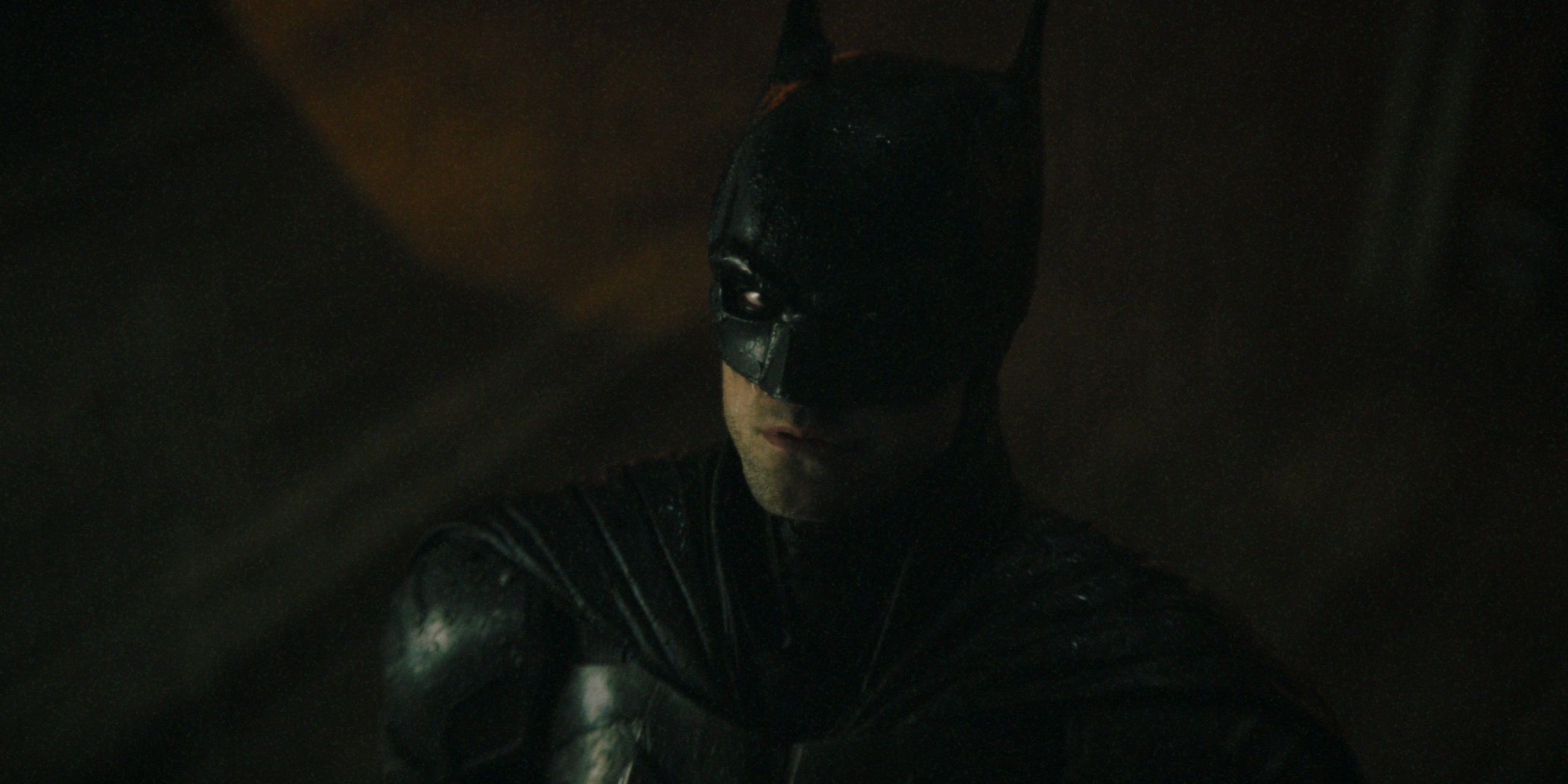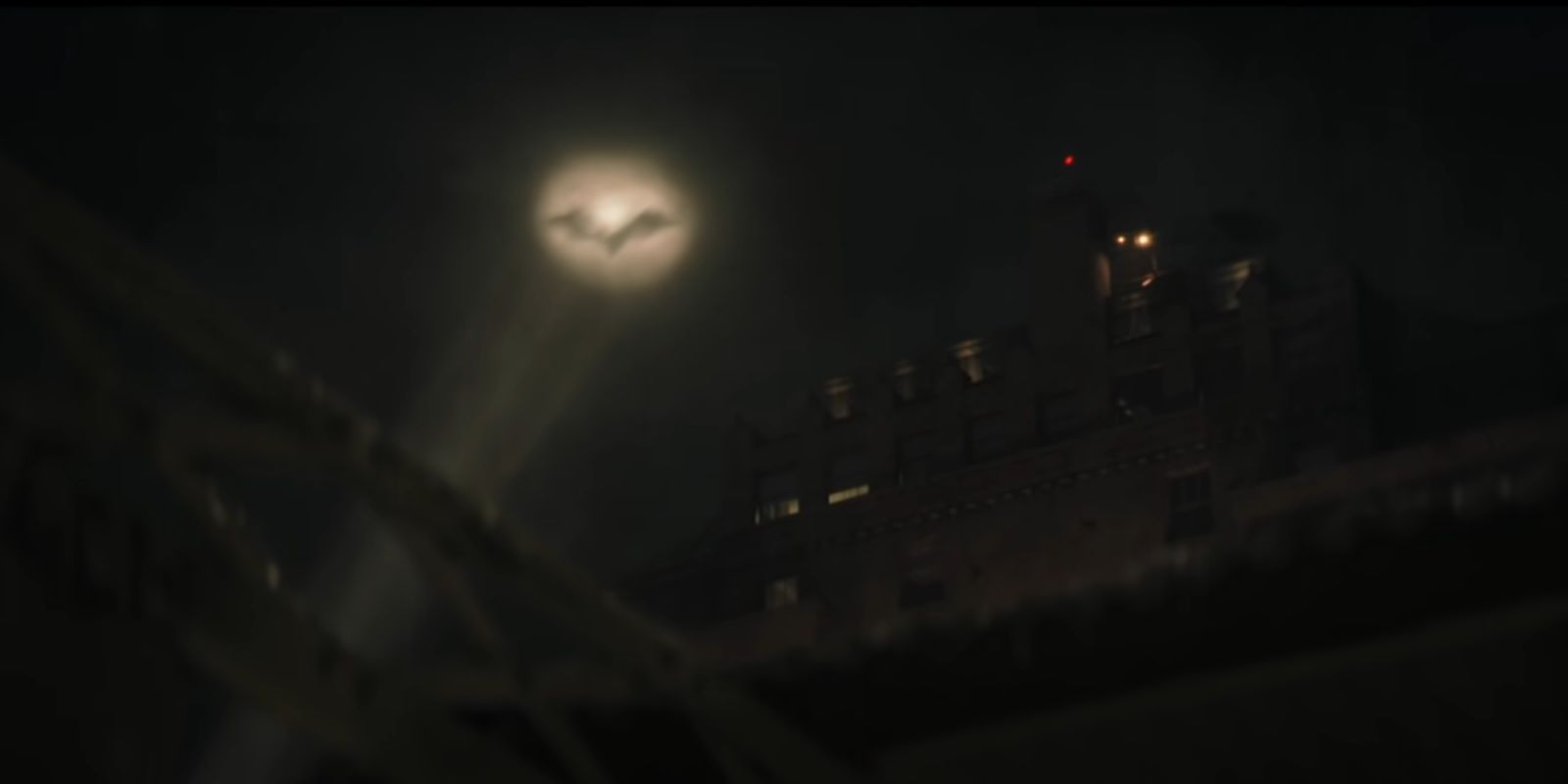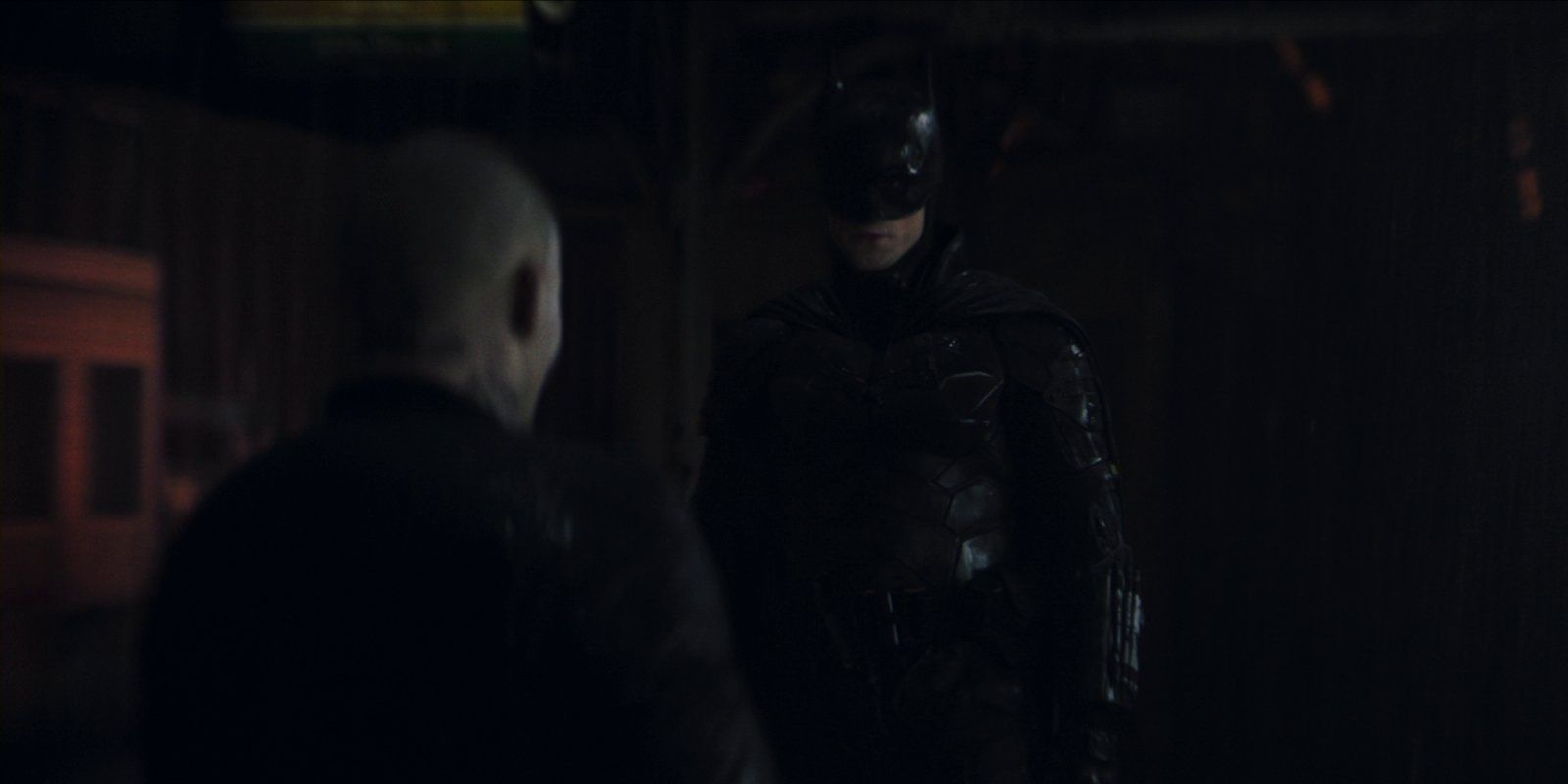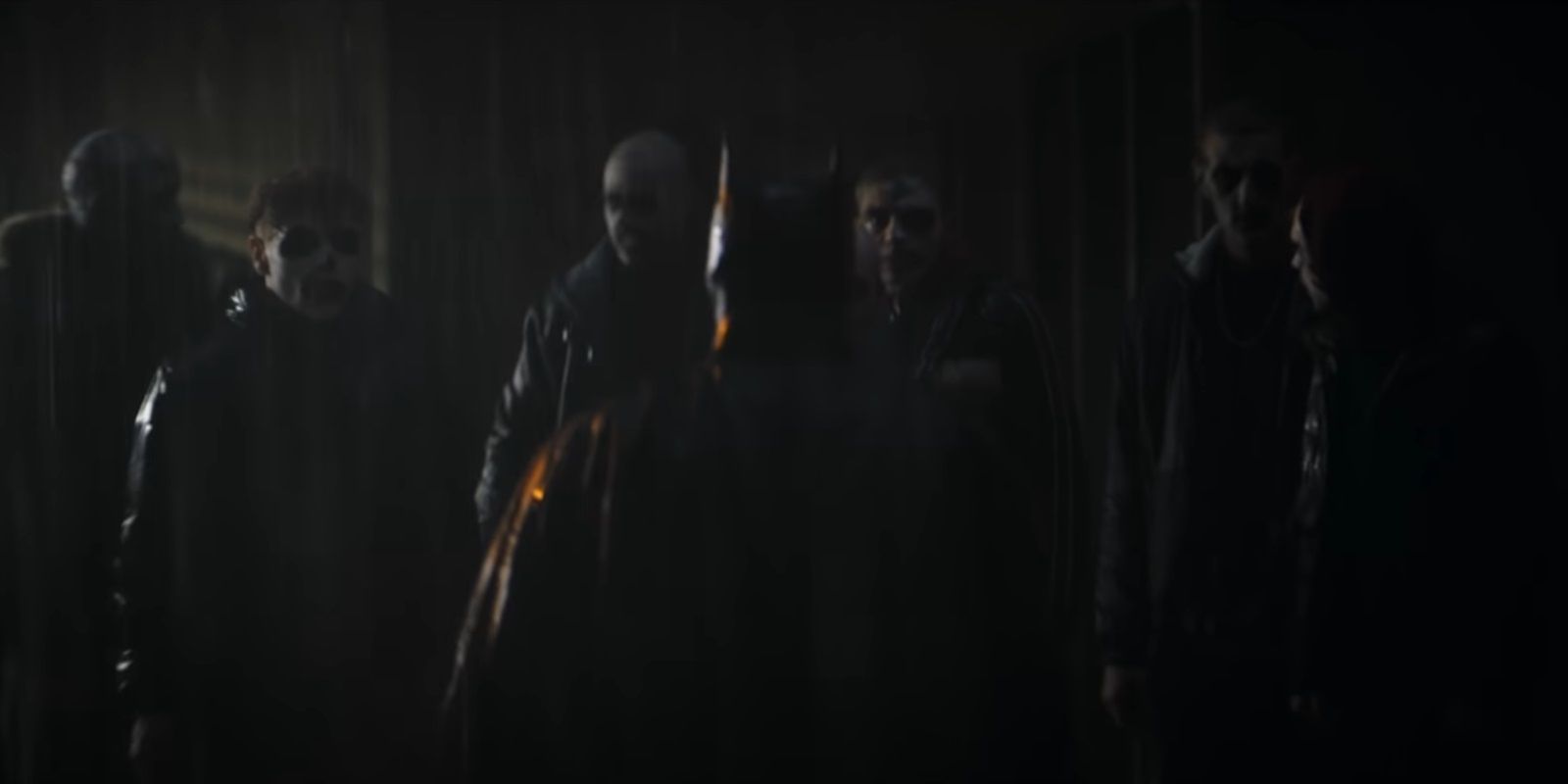The Batman is nowhere to be seen in the opening scene of The Batman. In a fun homage to John Carpenter’s Halloween, Matt Reeves opens his Bat-reboot from a killer’s perspective (on Halloween night, appropriately) as he stalks his unsuspecting victim in their home. The Riddler murder immediately tells the audience that this will be an even darker, even edgier, and even scarier Batman movie than they’ve ever seen before. It doesn’t play like the opening scene of a superhero movie; it plays more like the opening scene of a horror movie.
The opening Riddler murder acts as a prologue, or a tonal appetizer. The movie really gets going when Reeves introduces Batman himself. When the Riddler straddles the mayor’s blood-soaked corpse and takes out his favorite toy – a roll of duct tape – Reeves cuts away to a breathtaking montage debuting his neon-drenched vision of Gotham City and, more importantly, his brooding take on Bruce Wayne. This montage could stand on its own as a short film introducing this new version of Batman ahead of the movie itself.
Introducing a new incarnation of a character like Batman is a unique challenge. He’s one of the most familiar icons of all time, known to audiences around the world, but as the director of a new Batman reboot, Reeves still had to communicate what sets his version apart and the role he plays in this particular story. A “greatest hits”-style Batman movie would be a lot of fun, but every movie needs to work on its own terms. After the opening Riddler murder, Batman’s introductory montage instantly establishes the tone, style, and characterization of Reeves’ take on the Dark Knight mythos. The visuals, music, and editing in this montage all come together to perfectly set the tone for the movie.
It’s Not Just A Signal
Editors William Hoy and Tyler Nelson cut all over the place throughout this montage – closeups of Bruce Batsuit-ing up, glimmers of Gotham’s criminal underworld, tracking shots of a sleep-deprived Bruce blending into a crowd – but their cross-cutting is so sharp that the audience is never lost. They link disparate images with recurring motifs like the glow of the Bat-Signal. It also helps that Robert Pattinson’s grizzled voiceover narration (an homage to the diary entries of Travis Bickle, a similarly insomniac vigilante, in Martin Scorsese’s Taxi Driver) unifies the visuals by explaining Batman’s ethos and his growing impact on Gotham’s criminal population.
In this voiceover, Bruce puts a fresh spin on the symbolism of the Bat-Signal: “It’s not just a signal; it’s a warning.” Reeves builds tension by cross-cutting between various criminals – a petty thief, a graffiti artist, a bunch of street thugs on a train, etc. – as they spot that luminous warning in the sky. As these crooks are all stricken with fear and make a run for it, the audience is left guessing which one will incur the Bat’s wrath. Finally, he strides into the frame at the train station where the thugs are beating up an innocent commuter. He emerges from the shadows of a long, dark hallway, much like Donny “The Bear Jew” Donowitz in Inglourious Basterds, ready for action.
Meeting Mr. Vengeance
While The Batman forgoes the traditional pearls-on-the-cobbles origin story, it does tell a different kind of Batman origin story: his journey from a symbol of vengeance to a symbol of hope. The opening train station beatdown sets the stage for this arc, as the Bat pummels one of the gangsters to the ground and tells his lifeless cadaver, “I’m vengeance!” Then, Batman slowly rises to his feet and gives each of the remaining thugs an ocular pat-down as he prepares to fight them all at once. From the way he carries himself in the Batsuit alone, Pattinson instantly places himself as one of the greatest live-action Batmen of all time.
The ensuing fight scene is masterfully choreographed. The stunt team introduces this Batman’s inexperience as a crimefighter – the backbone of this take on the character – with a Dark Knight who takes as many beatings as he gives out. Fans who prefer to see a badass Batman than a Batman who gets punched in the face won’t be disappointed. He does manage to singlehandedly defeat them all and the mere fact that he’s taking on a whole gang alone is pretty impressive. But Pattinson’s Batman doesn’t yet have his peers’ precision or quick wits or grace under fire. The rest of Reeves’ trilogy can explore his journey to become a better Batman.
Can’t Fight City Halloween
The Batman’s three-hour runtime has been heavily criticized, but those three hours fly by because the movie is deeply atmospheric. This atmosphere can be credited almost entirely to two people: cinematographer Greig Fraser and composer Michael Giacchino, both of whom deserve some attention from the Academy at next year’s Oscars. Fraser used anamorphic lenses, gloomy lighting, and a shallow depth of field – not to mention gallons of rainfall – to immerse the audience in Gotham City and evoke the moody ‘70s-era neo-noir style that Reeves was aiming for.
Giacchino instead captivated the audience with unapologetically creepy music, utilizing harsh brass sounds and sharp, stressful melodies to keep the viewer on the edge of their seat (and also utilizing a badass four-note leitmotif to announce Batman’s presence). The Caped Crusader’s introduction is underscored by “Can’t Fight City Halloween,” a piece that exemplifies this spooky tone wonderfully. With the same suspense-building techniques as John Williams’ Jaws theme, “Can’t Fight City Halloween” plays more like a horror score than a superhero score – and it works spectacularly.
After the Riddler murder and the Batman intro, the movie’s third distinctive sequence brings its two opening teasers together to form the basis of the plot: Batman and Jim Gordon’s investigation into the Riddler’s politically charged murders. This powerful scene completes Reeves’ portrait of a cynical, crime-infested Gotham as Batman arrives at the scene of the murder, only to be met with icy glares from every cop there. The G.C.P.D. hasn’t embraced this Batman as an ally yet; only Gordon has. These three opening sequences – a perfectly crafted Batman intro sandwiched between two Se7en-style “horror noir” setups – set the stage for the rest of The Batman beautifully.




